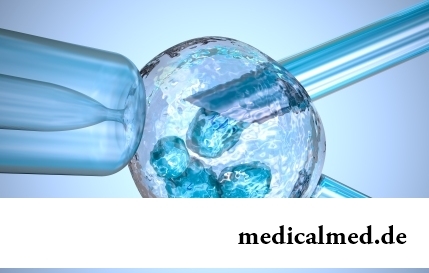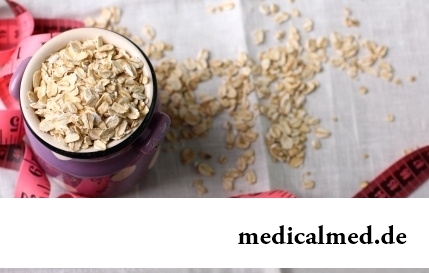





Kapozid
Application instruction:
 Kapozid – the combined anti-hypertensive drug.
Kapozid – the combined anti-hypertensive drug.
Form of release and structure
Kapozid release in the form of tablets: white with a cream shade or white color, oval, biconvex, with a notch on one of the parties and the squeezed-out word "SQUIBB" and figures "50/25" on another having slanted edge, the party with a sulfidosimilar smell; the easy mramornost is possible (on 14 pieces in blister strip packagings, on 2 packagings in a cardboard pack).
Active agents are a part of 1 tablet:
- Captopril – 50 mg;
- Hydrochlorothiazide – 25 mg.
Auxiliary components: stearic acid – 6 mg, microcrystallic cellulose – 118,5 mg, magnesium stearate – 0,3 mg, prezhelatinizirovanny (corn) starch – 30 mg, lactose – 70,2 mg.
Indications to use
Kapozid appoint at arterial hypertension (the patient who showed the combined treatment).
Contraindications
- Quincke's disease idiopathic or hereditary (in the anamnesis against the background of reception of inhibitors of an angiotensin-converting enzyme);
- Mitral stenosis;
- Stenosis of the mouth of an aorta;
- Stenosis of an artery of the only kidney or bilateral stenosis of renal arteries;
- Hypertrophic subaortic stenosis;
- Chronic heart failure;
- State after transplantation of a kidney;
- Arterial hypotension;
- Cardiogenic shock;
- Liver failure of heavy degree (hepatic coma, prekomatozny state);
- Renal failure of heavy degree (with serum creatinine> 1,8 mg/dl or clearance of creatinine <20-30 ml a minute, an anury);
- Primary hyper aldosteronism;
- Deficit of lactase, lactose intolerance, syndrome of glyukozo-galaktozny malabsorption;
- Simultaneous use with aliskireny and aliskirensoderzhashchy drugs at patients with a diabetes mellitus or a renal failure (at a glomerular filtration rate <60 ml a minute);
- Pregnancy and period of a lactation (breastfeeding);
- Age up to 18 years (safety and efficiency of use of Kapozid for this age group of patients are not established);
- Hypersensitivity to drug components, other inhibitors of an angiotensin-converting enzyme, derivatives of sulfonamide and thiazide diuretics (development of cross allergic reactions is possible).
Kapozid it is necessary to take with caution at the following diseases / states:
- The progressing diseases of a liver, abnormal liver function;
- Renal failure of moderate severity (at clearance of creatinine of 30-60 ml a minute);
- Hypopotassemia (not корригирующаяся medicines);
- Proteinuria (more than 1000 mg a day);
- Hypovolemia;
- Hyponatremia;
- Hyperuricemia, gout;
- Hypercalcemia;
- System diseases of connecting fabric and other autoimmune diseases, including a scleroderma, a system lupus erythematosus, a nodular periarteritis;
- Secondary closed-angle glaucoma and acute myopia;
- Hemodialysis using high-strength membranes (for example, AN69);
- General anesthesia / surgical intervention;
- Performing the desensibilizing therapy;
- Simultaneous use with potassium drugs, kaliysberegayushchy diuretics, kaliysoderzhashchy substitutes;
- Simultaneous use with lithium drugs;
- Simultaneous use with the medicines suppressing defense reactions of an organism (cytostatics, glucocorticoids, immunodepressants), procaineamide, Allopyrinolum;
- Belonging to negroid race;
- Advanced age (65 years are more senior).
Route of administration and dosage
Kapozid accept inside in 1 hour prior to food.
Daily dose – 1 tablet.
Side effects
During therapy development of disturbances from some systems of an organism which are shown with various frequency is possible (≥1/100 and <1/10 – it is frequent, ≥1/1000 and <1/100 – infrequently, ≥1/10 000 and <1/1000 – it is rare, <1/10 000 – it is very rare):
- Cardiovascular system: infrequently – a tachyarrhythmia or tachycardia, stethalgias, a heart consciousness, stenocardia, orthostatic hypotension, a myocardial infarction, a syncope, "inflows" of blood to face skin, peripheral hypostases, pallor, excessive lowering of arterial pressure, Reynaud's syndrome; very seldom – cardiogenic shock, a cardiac standstill;
- Alimentary system: often – vomiting, nausea, an abdominal cavity pains, irritation of a mucous membrane of a stomach, dryness of a mucous membrane of an oral cavity, diarrhea, taste disturbance, a lock; seldom – anorexia, aphthous stomatitis, stomatitis; very seldom – stomach ulcer, a glossitis, a hyperplasia of gums, pancreatitis, functional disturbances of a liver and a cholestasia (including jaundice), hepatitis (including a necrosis), increase in activity of enzymes of a liver, a hyperbilirubinemia;
- Central nervous system: often – dizziness, drowsiness; seldom – an ataxy, a headache, paresthesia; very seldom – a sight illegibility, a depression, confusion of consciousness, disturbance of cerebral circulation, including a syncope and a stroke;
- Respiratory system: often – short wind, dry unproductive cough; very seldom – an eosinophilic pneumonitis, a bronchospasm, a fluid lungs, rhinitis;
- Urinary system: infrequently – a nephrotic syndrome, the speeded-up urination, functional disturbances of kidneys (including a renal failure), a polyuria, an oliguria;
- Musculoskeletal system: very seldom – an arthralgia, a mialgiya, a myasthenia;
- Reproductive system and mammary gland: very seldom – a gynecomastia, impotence;
- Allergic reactions: often – an enanthesis, a skin itch, with rashes or without them, sometimes followed by an arthralgia and fever; infrequently – vascular hypostasis of hypodermic cellulose and skin; seldom – a Quincke's disease of intestines; very seldom – Stephens-Johnson's syndrome, an erythrosis, a small tortoiseshell, photosensitivity, a mnogoformny erythema, a violent pempigus, reversible pemfigoidny tests, an allergic alveolitis, exfoliative dermatitis, eosinophilic pneumonia, a Quincke's disease of mucous membranes, extremities, lips, persons, language, a throat and a throat (including with a lethal outcome);
- System of a hemopoiesis: very seldom – an agranulocytosis, a neutropenia, an eosinophilia, thrombocytopenia, a pancytopenia, a lymphadenopathy, anemia (including hemolitic and aplastic forms), autoimmune diseases, increase in credits of antinuclear antibodies;
- Laboratory indicators: often – an eosinophilia; very seldom – a hyperpotassemia, a proteinuria, a hyponatremia (including symptomatic), decrease in a hematocrit, the increased maintenance of an urea nitrogen, creatinine and bilirubin in blood, decrease in leukocytes, hemoglobin and thrombocytes;
- Others: often – an alopecia; infrequently – increased fatigue, stethalgias, deterioration in health.
Special instructions
At the beginning of therapy excessive lowering of arterial pressure, especially at patients with chronic heart failure, a renal failure and/or a severe form of arterial hypertension can be observed (including renal genesis). Before Kapozid's use it is necessary to compensate deficit of ions of sodium and to normalize the volume of the circulating blood, and also to define indicators of function of kidneys.
During therapy it is regularly necessary to control activity of liver enzymes, concentration of calcium and potassium in blood serum (especially at elderly patients, and also at the patients receiving treatment by glucocorticoids, cardiac glycosides, often using laxatives), uric acid, glucose, lipids (triglycerides and cholesterol), creatinine and urea.
Regular control of laboratory indicators and arterial pressure is especially necessary at the following diseases / states:
- Renal failure;
- Arterial hypertension of a heavy current (including renal genesis);
- Disturbances of water and electrolytic balance and dekompensirovanny chronic renal failure;
- Simultaneous use with Allopyrinolum, the lithium salts, procaineamide and medicines lowering immunity;
- The age is more senior than 65 years.
At use of inhibitors of an angiotensin-converting enzyme characteristic unproductive cough which passes independently after therapy cancellation is noted.
In certain cases at diseases of kidneys, especially at a heavy renal artery stenosis, increase in concentration of an urea nitrogen and creatinine in blood serum after lowering of arterial pressure can be observed reversible (after drug withdrawal).
During therapy increase in potassium concentration in blood serum can sometimes be observed. The risk of development of a hyperpotassemia is higher at patients with a diabetes mellitus and a renal failure, and also at accepting the potassium drugs, kaliysberegayushchy diuretics or other medicines causing increase in potassium concentration in blood of patients (such combinations are recommended to be avoided).
Because of the increased risk of development of anaphylactoid reactions, when carrying out a hemodialysis it is necessary to avoid use of dialysis membranes with high-permeability (for example, AN69). Also high risk of development of anaphylactoid reactions is noted at patients to whom the procedure of an aferez by lipoproteins of low density with the help a sulfate dextran was carried out.
At development of a Quincke's disease it is necessary to cancel Kapozid and to carry out careful medical observation before total disappearance of symptoms. The Quincke's disease of intestines can be followed by an abdominal cavity pains. At localization of hypostasis on a face, special treatment usually is not required, the Quincke's disease of a throat can lead to a lethal outcome.
Patients with the diabetes mellitus receiving insulin or hypoglycemic means for intake need to control carefully concentration of glucose in blood, especially within the first month of therapy.
During use of anesthetics or when carrying out extensive surgical interventions perhaps excess lowering of arterial pressure. In these cases the events directed to increase in volume of the circulating blood are held.
At development of jaundice or the expressed increase in activity of liver enzymes, therapy should be interrupted.
At patients with autoimmune diseases of connecting fabric, and also at the patients accepting immunosuppressors, procaineamide and Allopyrinolum, especially in the presence of the available earlier functional disturbance of kidneys before an initiation of treatment it is necessary to control number of leukocytes (in the first 3 months of therapy – each 14 days, further – each 2 months).
All patients accepting Kapozid need to control monthly number of leukocytes in blood in the first 3 months after an initiation of treatment, further – each 2 months.
At diseases of kidneys before an initiation of treatment and periodically throughout a course of therapy it is necessary to define concentration of protein in urine (because of risk of development of a proteinuria).
At emergence of such symptoms as sharp decrease in visual acuity and pain in an eyeglobe, it is necessary to stop immediately Kapozid's reception (because of risk of development of a passing myopia and acute closed-angle glaucoma). In cases of need it is necessary to use drugs for correction of intraocular pressure.
It is necessary to reveal timely clinical signs of disturbances of water and electrolytic balance (a hypochloride alkalosis, a hyponatremia, a hypopotassemia). It is especially important at excessive long vomiting or at administration of infusion solutions. Can be symptoms of such disturbances: thirst, dryness in a mouth, weakness, confusion of consciousness, a lethargy, concern, spasms or muscle pains, muscular weakness, an oliguria, excess lowering of arterial pressure, tachycardia, vomiting, nausea.
At hot weather at patients with hypostases the hyponatremia caused by increase in volume of the circulating blood can be observed. In this case it is necessary to limit liquid consumption.
During Kapozid's reception it can be noted development of the following states / diseases:
- Hyperuricemia or attacks of gout;
- Latentno the proceeding diabetes mellitus;
- Decrease in concentration of the connected iodine in blood serum without symptoms of dysfunction of a thyroid gland;
- Decrease in degree of excretion of calcium;
- The pathological changes of epithelial bodies which are followed by a hypophosphatemia and a hypercalcemia;
- Increase in degree of excretion of magnesium (can lead to development of a hypomagnesiemia);
- Fever, hyperadenosis and/or development of symptoms of pharyngitis and/or laryngitis (it is necessary to define immediately number of leukocytes).
Kapozid can be the cause of a positive take when carrying out a drug test, distort test results with bentiromide and cause false positive reaction in the analysis of urine to ketonic bodies.
During therapy it is necessary to be careful at control of motor transport and performance of other potentially dangerous types of activity demanding the increased concentration of attention and bystry psychomotor reactions.
Medicinal interaction
At the patients accepting diuretics, especially in an initiation of treatment, and also in a combination to strict observance of an electrolyte-deficient diet or a hemodialysis, excess lowering of arterial pressure which usually happens over the first hour after reception of the first appointed Kapozid's dose can sometimes be observed (it is necessary to provide control of a condition of the patient).
At excess lowering of arterial pressure it is necessary to transfer the patient to horizontal position with a low headboard and, in case of need, to enter intravenously 0,9% sodium chloride solution. Passing excessive lowering of arterial pressure by a contraindication to further therapy is not, Kapozid's reception can be continued after his normalization by means of increase in volume of the circulating blood.
Medicinal interactions of Kapozid are defined by properties of the active agents entering him. To avoid development of undesirable side effects and change of therapeutic action, before simultaneous use with other drugs it is necessary to consult with the doctor.
Terms and storage conditions
To store in the place, unavailable to children, at a temperature up to 25 °C.
Period of validity – 3 years.
Name of drug
Price
Drugstore
Kapozid тбл 50mg/25mg No. 28, HFK (г.Москва) Quinacrine
520 rub.
 Network of the Moscow drugstores of IFC
Network of the Moscow drugstores of IFCAccording to WHO researches the daily half-hour conversation by the mobile phone increases probability of development of a tumor of a brain by 40%.

Antibiotics - - it is possible to call the chemical compounds suppressing growth of bacteria the break in the field of medicine which allowed to save persons...
Section: Articles about health
All the known slogan "Protect Men!" arose not from scratch. In a sense, the nature created men much less adapted for vital disorders, than it seems at first sight. Statistically, men are ill more often...
Section: Articles about health
Reactive pancreatitis - the disease which is characterized by inflammatory process in a pancreas which arises most often because of excess activity of digestive enzymes. It − the emergency state which treatment has to take place in surgical department under control of doctors. The acute inflammation of gland can become the reason of its transition to a chronic form, and also development is purulent - necrotic pancreatitis which the extensive necrosis of fabrics can follow. Zabolev...
Section: Articles about health
For most of the working people the problem of having a snack is particularly acute enough. Sooner or later there is a question: what is possible quickly for a sja...
Section: Articles about health
About influence of fasting days on an organism it is told much – both about advantages, and about shortcomings. It is considered that fasting day in the form of a short-term monodiet is useful, promoting effective removal of slags from an organism whereas irregular, it is excessive п...
Section: Articles about health
The pine is one of the most widespread plants of our woods. Its needles and pitch not without reason called by "gallipot" were since ancient times used for strengthening of protective forces of an organism, treatment of avitaminosis, anemia and many other diseases. In recent years wide popularity was gained by the national medicines prepared from pinecones. "Fruits" of a coniferous tree contain a huge amount of vitamins, biologically active agents, antioxidants, phytoncides and other useful to...
Section: Articles about health
Popular joke that there are no healthy people, and is nedoobsledovanny, most of us considers an honest truth, and put that...
Section: Articles about health
It is difficult to revaluate importance of kidneys for an organism. These bodies not only perform work on purification of blood of decomposition products and removal of excess liquid. They are responsible also for production of some hormones necessary for normality maintenance...
Section: Articles about health
EKO, or extracorporal fertilization - a method of treatment of infertility which became the reason of a set of broken-down copies in due time accused the people working on its creation neither more nor less of rivalry good luck. Already very few people deny the right of a method for existence, and to surprise nobody with "children from a test tube". And nevertheless, a certain magic in the procedure of artificial fertilization is, process of origin of new life is always a secret, and even it р now...
Section: Articles about health
All diseases from nerves – in this joke a big element of truth, are said by doctors. Constant stresses lead body to decrease in protective forces...
Section: Articles about health
The dietology, as well as other sciences, does not stand still. Food stuffs are exposed to comprehensive study, and scientists obtain new information on their properties and influence on a human body. Unfortunately, this reasonable and natural process from time to time д...
Section: Articles about health
The list of stereotypes of which, apparently, all know strongly includes following: British surely eat porridge for breakfast. Perhaps, not all modern residents of Britain arrive quite so, but for those from them which continue to follow this tradition, it is possible to be glad sincerely: oat flakes are a product which regular use not only helps the person to keep force and beauty long. Porridge in a special way influences an organism, protecting it from seriousness...
Section: Articles about health
The summer of this year in Russia was very ambiguous. Regions suffered from a merciless heat, from pouring rains, from times...
Section: Articles about health
With age in a human body harmful substances collect. We receive them with food and water, at inhalation of the contaminated air, reception of medicines, use of household chemicals and cosmetics. A considerable part of toxins accumulates in a liver, osnovno...
Section: Articles about health
It is pleasant to state a possibility of improvement of quality of life of people with problems of functioning of secretory system. Efforts of talented inventors created products which will be able to provide normal life activity of clients with moderate degree of a disease, it is essential to facilitate the help to patients with strongly expressed disturbances....
Section: Articles about health
The medicine promptly develops, and the fact that else quite recently it seemed by miracle can now. We are not surprised any more to the fact that sport...
Section: Articles about health
Statistically, in Russia about 34% of citizens smoke. Most of consumers of tobacco has problems with health sooner or later. Not only smokers, but also their relatives suffer. Besides, cigarettes are expensive, and need of their acquisition heavy bry...
Section: Articles about health
Food with the increased content of sugar is attractive to most of people - it is scientifically confirmed fact. Business here not in intemperance or dissoluteness: the sweet food is associated since childhood with feeling of rest and safety which tests the kid when it absorbs maternal milk. Besides, getting into a human body, sugar strengthens production of "happiness hormones" which all of us so need. And still life of sweet teeth seldom happens cloudless: their too big loss...
Section: Articles about health
It is possible to find the extensive range of fruit and vegetables in modern shops. Russians already got used that on counters in any...
Section: Articles about health
Statistically, can only one of ten of our compatriots brag of a decent condition of an oral cavity. Six teeth affected with caries are the share of the average Russian. For comparison, this indicator for Europeans almost six times exchanges...
Section: Articles about health
Small appetite at the child – the complaint which pediatricians should hear practically from each mother. Most often it is carried to the category of children's whims, however the refusal of food in certain cases can be to alarming symptoms therefore it cannot be ignored....
Section: Articles about health
To look healthy and means well-groomed not only to be pleasant to people around, but also to feel strong, sure and taken place. To Spa...
Section: Articles about health
Physical activity is necessary for normal functioning of a human body. At a lack of the movement joints cease to function, muscles atrophy, cardiovascular activity is broken and the metabolism worsens. Modern городс...
Section: Articles about health
What woman does not dream of a beautiful and thick hair? While physicians developed difficult schemes on hair transplant, in the industry of hairdresser's art a few years ago there was a sensation – methods of hair extension appeared. It would seem, dreams came true: though the procedure of building also does not belong to the category cheap, practically any woman can increase several times the volume of hair, change their length and color – generally, to become the real beauty queen....
Section: Articles about health
The words "disease" and "patient" not without reason come from one root – "pain". As a rule, symptoms of illnesses thoroughly spoil the patient...
Section: Articles about health
The problem of diagnosis was and remains to one of the most important in medicine. From that, the reason of an indisposition of the patient will be how precisely defined, eventually success of treatment depends. In spite of the fact that the majority of the diagnostic methods applied in about...
Section: Articles about health
About 20% of the population of our planet have a hypertension (permanent increase in arterial pressure). This disease has an adverse effect on the standard of living, reduces working capacity, and in the absence of systematic treatment threatens with such complications as a myocardial infarction, a stroke and other heavy illnesses which can result in disability or sudden death. Most of patients for maintenance of pressure at more or less acceptable level accept appointed doctors лекарст...
Section: Articles about health

